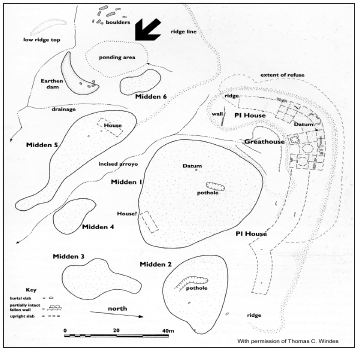 |
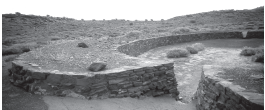 |
|||
| The “wall” system at Wupatki (above) is very similar to the one at Mummy Lake, Mesa Verde (below). Although tests apparently were not performed at Wupatki, it is very possible that it was originally filled with corn pollen as was the fill between the Mummy Lake walls. If the proper tests are not done, as in this case, the archaeological evidence will be lost forever. I recommend that all sites be carefully tested for pollen strata even in seemingly unlikely areas such as raised dikes as well as depressed swales like Chacoan “roads.” The very fine archaeology, including palynology, (study of pollen) done at Mummy Lake by Kenneth Wright in 1998/1999 provided the baseline data for discovering fertilizer dehydration basins in the Mesoamerica corridor from Guatemala to Colorado. |
||||
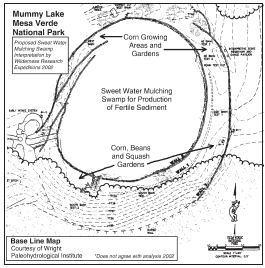 |
||||
| The Casa del Rio and the Andrews Great House sites should be evaluated as a possible multiple platform mound and fertilizer production sites similar to Paquimé --- (Late C.E. 800’s - Windes). |
||||
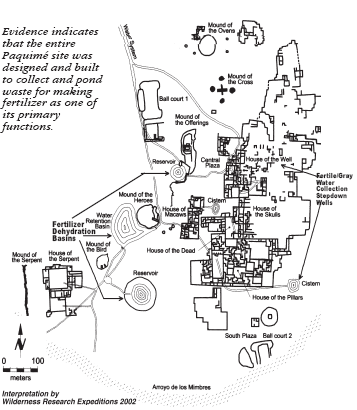 |
||||
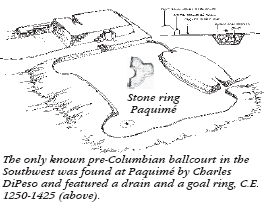 |
||||
copyright 2005 - Richard D Fisher - DigitalTeamWorks.com